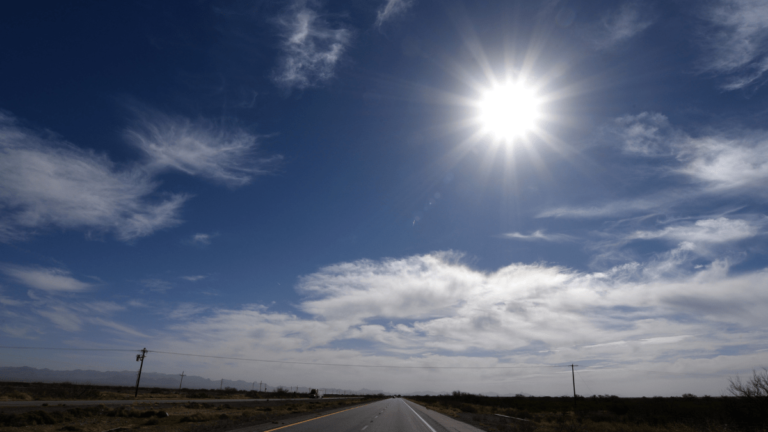A solar telescope perched atop Haleakalā, the dormant volcano on the Hawaiian island of Maui, has captured new grainy images of the sun, unlike anything seen before.
The The solar images were released Thursday by the National Solar Observatoryshowing bright orange sunspots on the sun’s surface, known as the photosphere.
“Complex sunspots or groups of sunspots can be the source of explosive events such as flares and coronal mass ejections that cause solar storms,” the observatory said. said.
NSF/AURA/NSO
This image shows the plasma heating rising in the convective bubbles of the “quiet” sun, then cooling in the intergranular lines.
NSF/AURA/NSO
This image from the Daniel K. Inouye Telescope shows the solar atmosphere above the sun’s surface.
NSF/AURA/NSO
This image shows the solar atmosphere above the sun’s surface.
NSF/AURA/NSO
This image shows the fine structures of a sunspot on the sun’s surface, as captured by the Daniel K. Inouye Telescope.
NSF/AURA/NSO
This image shows the “end phase” of a sunspot, due to the presence of umbral fragments, according to the National Solar Observatory.
NSF/AURA/NSO
This image shows a light bridge and convection cell surrounding a sunspot during the day.
Sunspots are often the size of Earth itself, or larger, and are found in areas with strong magnetic fields, the observatory said.
“These energetic and eruptive phenomena influence the Sun’s outermost atmospheric layer, the heliosphere, with the potential to affect Earth and our critical infrastructure,” the observatory said.
The images were captured by the Daniel K. Inouye Solar Telescope, the most powerful ground-based telescope in the world.
The images provide a spectacular view of sunspots and plasma on the sun, with patterns resembling honeycombs or flames.
The plasma images were taken in “quiet” regions of the sun – or areas of low solar activity.
These images show a “pattern of hot upwelling plasma” surrounded by “cooler, downwelling solar plasma.”
Named the telescope, which measures 13 feet Daniel K. Inouyea US senator from Hawaii who served in Congress until his death in 2012.
The telescope is located atop Maui’s Haleakalā — which means “house of the sun.”
“As the Inouye Solar Telescope continues to explore the Sun, we look forward to more new and exciting results from the scientific community – including spectacular views of our solar system’s most influential celestial body,” said observatory.
To learn more about the Inouye Solar Telescope and recent images, press here
NASA’s James Webb telescope will change our understanding of the universe forever. The European Space Agency’s Maurice te Plate, who is a systems engineer for the telescope, joined LX News Now host Eric Alvarez to explain why this is a “game changer.”
